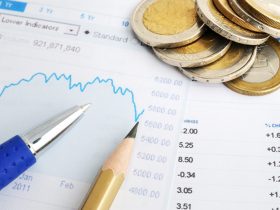The U.S. dollar
DX00,
enjoys unrivaled global status, but rising federal deficits and U.S. sanctions on businesses and banks in Russia and other nations are causing governments to seek alternatives.
How successful those efforts will be remain to be seen, but historically, the U.S. dollar has been well-managed. To the extent its value against other currencies fluctuates, it exhibits what has been called the “smile” pattern. The dollar’s value against other currencies peaks during times of global economic distress or recession and falls during expansions.
Consequently, businesses know they can sell dollar securities at favorable terms when they are most likely to need cash in other currencies. The U.S. share of global trade is just 10%, but the U.S. dollar is the payment currency for about half of global trade. The dollar is the “vehicle currency” for about 90% of foreign exchange transactions globally. For example, when a Chilean importer purchases Vietnamese apparel, it makes payments in dollars or trades Chilean pesos into dollars and then those greenbacks into Vietnamese dong. A direct market between them would be too thin to be reliable.
Global businesses write cross-border contracts specifying payments in dollars to protect against local currency fluctuations, and they maintain large dollar-denominated checking accounts. Keeping liquidity in non-interest-bearing bank accounts is expensive; consequently non-U.S. businesses and investors hold large amounts of U.S. Treasury securities.
At the same time, to back up their currencies, global central banks hold dollars, yen, pounds, euros and yuan, and government securities denominated in those currencies.
China looks to cash in
The dollar accounts for 55% of central bank reserves, but despite boasting much greater exports, the China’s yuan’s share of reserves is less than one-tenth of that.
China’s current financial difficulties notwithstanding, President Xi Jinping has been flexing China’s diplomatic muscles — for example by brokering normalization of relations between Iran and Saudi Arabia.
Xi’s ambitions appear to include replacing the dollar with the yuan
USDCNY,
in global trade and finance, but the U.S. legal and financial systems have characteristics that for now allow the dollar to dominate.
One major advantage is that the dollar is freely convertible to other currencies. The yuan is reasonably so for trade, but for capital flows it is tightly regulated.
Moreover, the U.S. legal system offers investors security. They are safe from arbitrary sovereign appropriation and can hold corporate stocks, bonds and real estate with confidence to store wealth. China’s arbitrary treatment of tech and other firms indicates that it cannot offer the same.
Plus, the foreign-exchange market for the dollar and other Western currencies is undergirded by the SWIFT — a consortium of major banks, mostly domiciled in the United States and its reliable NATO and Pacific allies. SWIFT’s messaging system enables seamless currency trades.
Political truths and consequences
U.S. sanctions have unsettled developing and emerging economy governments. Banks, for example, have found it unpleasant to run afoul of the U.S. Treasury. For example, when BNP Paribus SA pleaded guilty to processing $9 billion in oil transactions involving Sudan, Iran and Cuba, it was fined a like amount and its oil and gas finance business was barred from dollar-clearing transactions for a year. That’s a tough spot for a multinational bank.
Developing markets know that if one of their companies runs afoul of U.S. or other allies’ trade restrictions on Russia or anyone else, they could get caught in the same net as BNP.
As a result, Brazil has agreed and Saudi Arabia is considering accepting yuan in payments for exports to China. But truth is, yuan won’t buy Japanese robots or German automobiles. The money will have to go back into the dollar payments system — it would be just an expensive detour around the dollar’s central function.
Read: Why U.S. dollar is at no ‘meaningful risk’ of losing status as the world’s reserve currency, despite challenges from China
Similarly, the BRICS—Brazil, Russia, India, China and South Africa—are expanding and studying an alternative currency system, but this would need China at its center. For such an arrangement to work, China would have to create a foreign-exchange messaging system akin to SWIFT.
“ China would have to offer an alternative to the dollar by making its currency and national debt fully convertible and accessible to foreign investors. ”
All this could change if U.S. deficits spiral out of control and the Federal Reserve was forced to print more money than is consistent with controlling inflation. Then, dollar-denominated securities would no longer offer a reliable store of value to global businesses and investors.
But China would have to offer an alternative by making its currency and national debt fully convertible and accessible to foreign investors. China would also need tocreate confidence that its legal system would protect bond holders’ and foreign investors’ property rights, especially during periods of economic distress when they are most likely to need cash.
China offers its autocratic, socialist-market polity as a superior alternative to democratic capitalism. For Xi to make the yuan a viable alternative to the dollar, he would have to create legal protections and embrace reforms that would make China much more like a Western capitalistic society.
Peter Morici is an economist and emeritus business professor at the University of Maryland, and a national columnist.
More: A rising U.S. dollar is ringing alarm bells overseas. Should stock-market investors worry?
Plus: Nouriel Roubini says a return to 2% inflation is ‘mission impossible’
Read the full article here













Leave a Reply